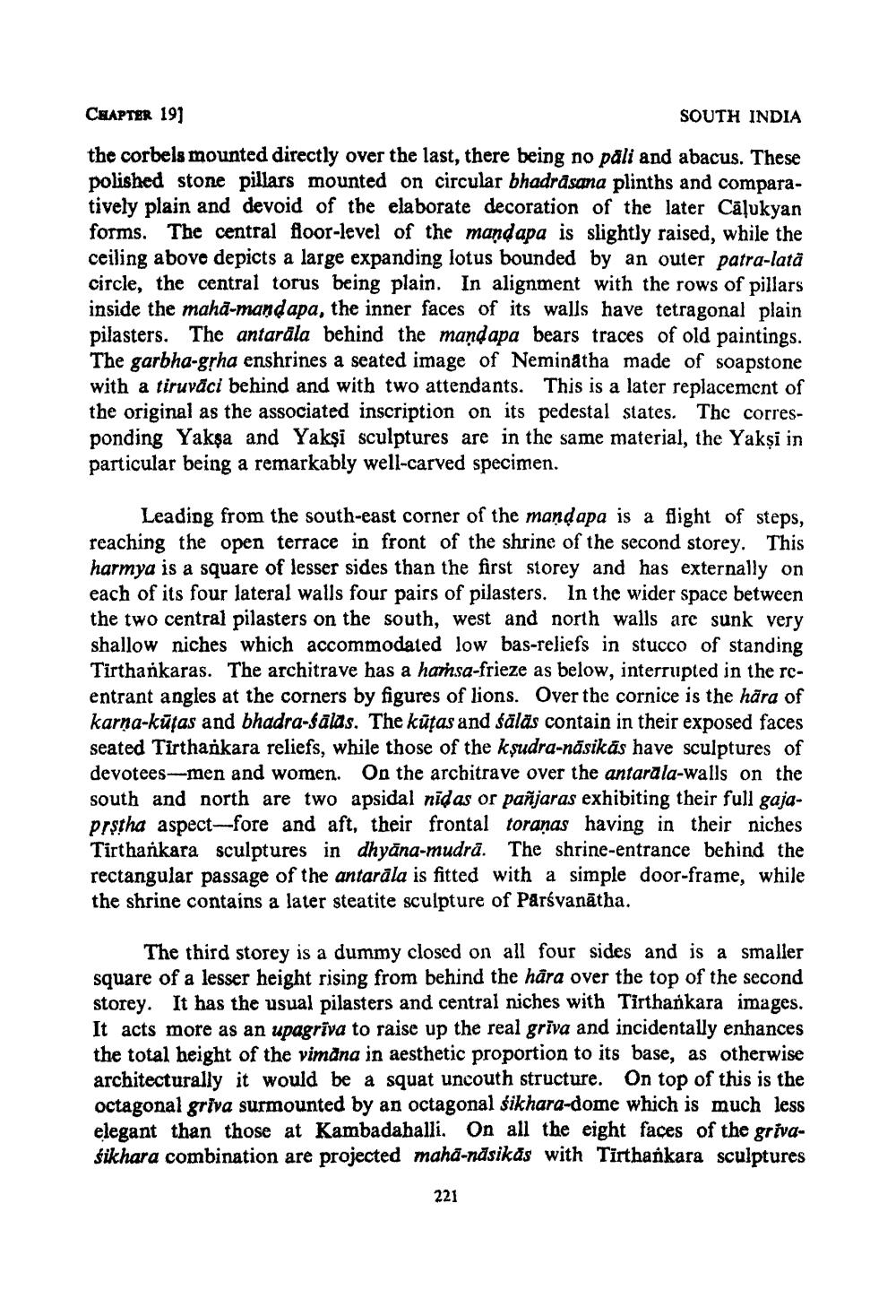________________
CHAPTER 19]
SOUTH INDIA
the corbels mounted directly over the last, there being no pali and abacus. These polished stone pillars mounted on circular bhadrasana plinths and comparatively plain and devoid of the elaborate decoration of the later Calukyan forms. The central floor-level of the mandapa is slightly raised, while the ceiling above depicts a large expanding lotus bounded by an outer patra-latä circle, the central torus being plain. In alignment with the rows of pillars inside the maha-maṇḍapa, the inner faces of its walls have tetragonal plain pilasters. The antarāla behind the mandapa bears traces of old paintings. The garbha-gṛha enshrines a seated image of Neminatha made of soapstone with a tiruvaci behind and with two attendants. This is a later replacement of the original as the associated inscription on its pedestal states. The corresponding Yakṣa and Yakşi sculptures are in the same material, the Yakși in particular being a remarkably well-carved specimen.
Leading from the south-east corner of the mandapa is a flight of steps, reaching the open terrace in front of the shrine of the second storey. This harmya is a square of lesser sides than the first storey and has externally on each of its four lateral walls four pairs of pilasters. In the wider space between the two central pilasters on the south, west and north walls are sunk very shallow niches which accommodated low bas-reliefs in stucco of standing Tirthankaras. The architrave has a hamsa-frieze as below, interrupted in the rcentrant angles at the corners by figures of lions. Over the cornice is the hära of karṇa-kūtas and bhadra-falas. The kūtas and sālās contain in their exposed faces seated Tirthankara reliefs, while those of the kṣudra-nāsikās have sculptures of devotees-men and women. On the architrave over the antarala-walls on the south and north are two apsidal nīdas or pañjaras exhibiting their full gajaprstha aspect-fore and aft, their frontal toranas having in their niches Tirthankara sculptures in dhyana-mudra. The shrine-entrance behind the rectangular passage of the antarala is fitted with a simple door-frame, while the shrine contains a later steatite sculpture of Parsvanatha.
The third storey is a dummy closed on all four sides and is a smaller square of a lesser height rising from behind the hära over the top of the second storey. It has the usual pilasters and central niches with Tirthankara images. It acts more as an upagriva to raise up the real grīva and incidentally enhances the total height of the vimana in aesthetic proportion to its base, as otherwise architecturally it would be a squat uncouth structure. On top of this is the octagonal griva surmounted by an octagonal sikhara-dome which is much less elegant than those at Kambadahalli. On all the eight faces of the grivasikhara combination are projected mahā-nāsikās with Tirthankara sculptures
221




